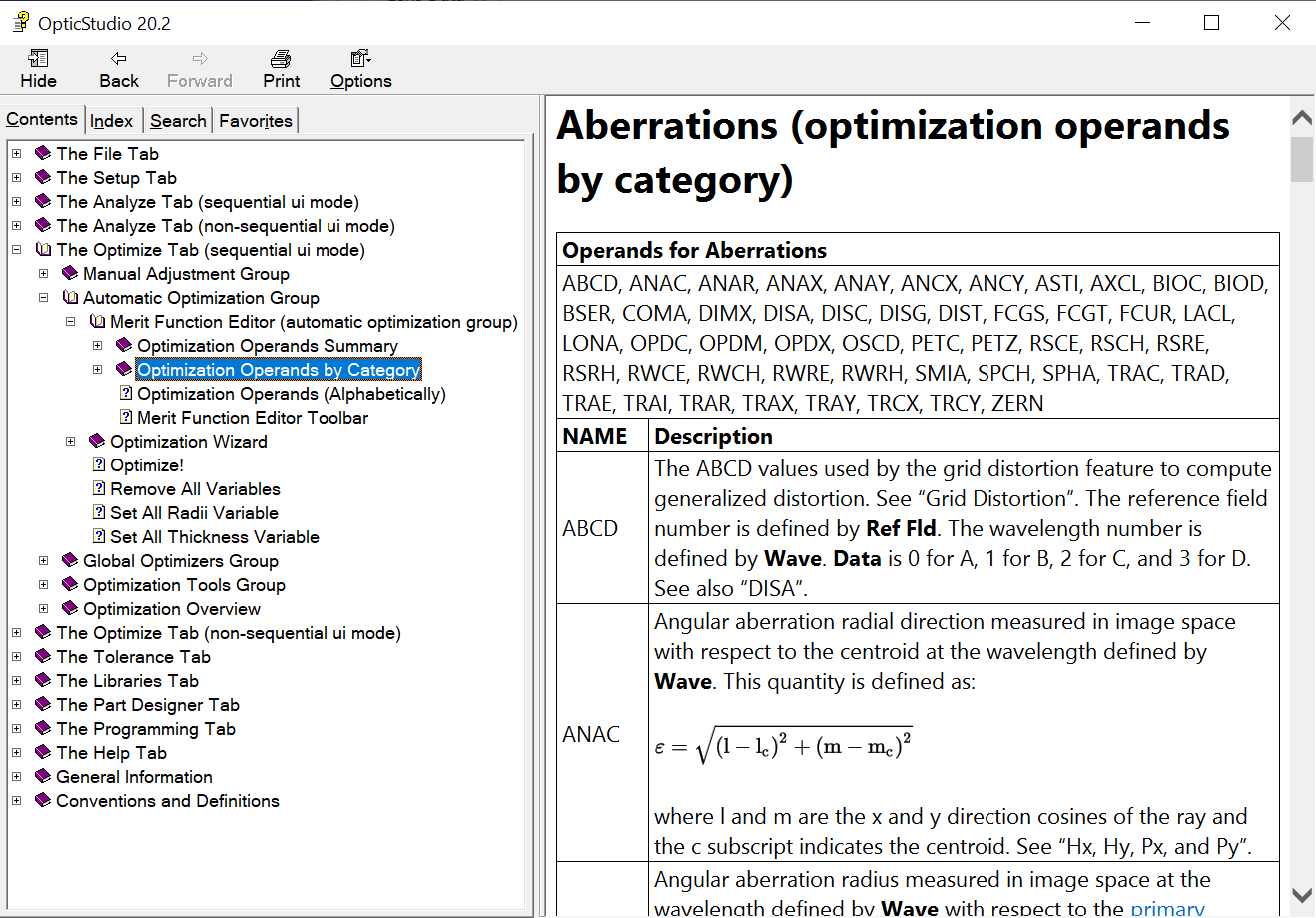What is the difference between these distortion operands?
DIST or DIMX?
Best answer by Sarah.Grabowski
DIST and DIMX are both operands that provide the optimization algorthim some direction to constrain the distortion. DIST reports the amount of third order distortion (as calculated by the Seidel coefficients) in waves at a specified surface, or as a percent distortion when no surface is defined. DIMX, on the other hand, is a boundary operand that specifies an upper limit on the acceptable amount of distortion in a system, instead of defining a specific target value. This can be either in waves or in absolute distance, but is not calculated with the Seidel coeficients like DIST. Like all boundary operands, when the distortion is less that the maximum, then the value displayed is the target, and if it is greater than the maximum, then the actual value is shown and it will taken into account by the optimization algorithm.
The precise definition of all operands in OpticStudio can be found in the Help Files under the Merit Function Editor.

Reply
Enter your E-mail address. We'll send you an e-mail with instructions to reset your password.



